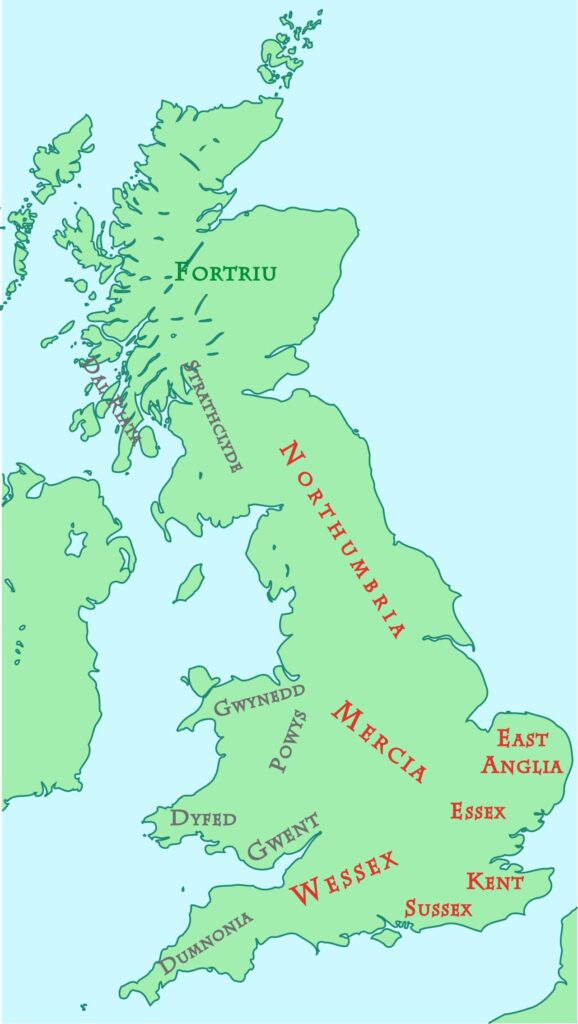The Seven Kingdoms of Old England: Northumbria

The clue is in the name. Northumbria was the Anglo-Saxon kingdom north of the Humber. At its peak it was the largest and most powerful Anglo-Saxon kingdom. Through being home to Bede for all his long life, it is the best recorded kingdom up to the eighth century.
Northumbria demonstrates how smaller kingdoms consolidated into larger polities, for it came about through the forced union of Bernicia, with its royal stronghold at Bamburgh, and Deira, centred on the old Roman city of York.
According to the surviving king lists, Bernicia was founded in 547 by Ida – hence the kings of Bernicia were called the Idings – when he captured Bamburgh. For half a century, the Idings fought desperately to retain their precarious hold on the coast, until an alliance of Brittonic kings drove them from Bamburgh on to Lindisfarne. On the point of extinction, the Idings were saved when one of the besieging kings took the opportunity to assassinate his rival. The siege dissolved into recrimination, the Idings escaped and re-established themselves on Bamburgh and, soon, the neighbouring Brittonic kingdoms would rue this lost opportunity.
Around 593, Æthelfrith took the throne and he proved to be one of the most successful warrior kings of the time, dealing a number of devastating defeats to the Britons and forcibly amalgamating the kingdom of Deira to Bernicia to create Northumbria. Under his leadership, Northumbria became the most powerful kingdom in Britain and, though Æthelfrith was killed in battle in 616, Edwin, the man who succeeded Æthelfrith, consolidated the kingdom’s power and expanded its territory.
Edwin also became the first northern Anglo-Saxon king to convert to Christianity, but before he could cement the new religion’s place in his kingdom, Edwin too was killed in battle. After a chaotic interregnum, Æthelfrith’s son, Oswald, returned from exile to claim the throne. A devout Christian, Oswald brought monks from Iona to preach the new religion. The monks founded the monastery on Lindisfarne.
Northumbrian power continued to expand under Oswald’s brother and successor, Oswiu, and also during the reign of Oswiu’s son, Ecgfrith. But, in 685, the Northumbrians suffered a catastrophic defeat at the hands of the Picts. Ecgfrith was killed and much of the Northumbrian army destroyed. The battle stopped further northward expansion by the Northumbrians: the eventual birth of Scotland can be traced back to this Pictish victory.
While Northumbria declined militarily after the Battle of Nechtansmere, the eighth century saw a cultural flowering that produced, among many wonders, Bede’s Ecclesiastical History and the Lindisfarne Gospels. The Viking invasion of the ninth century divided Northumbria again, with a Viking kingdom established at York but an English earldom retaining Bamburgh and Bernicia, cut off from the rest of the Anglo-Saxon kingdoms until the unification of the country by Æthelstan the Glorious in the tenth century.
0 Comments